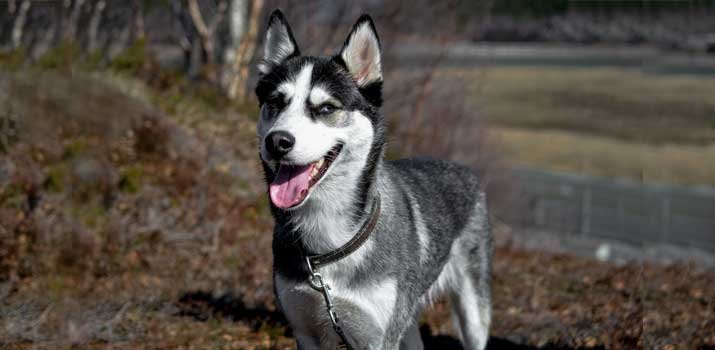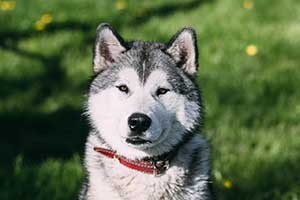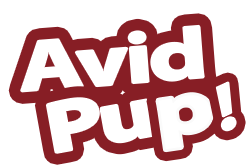
Is there anything cuter than a playful, fluffy husky puppy? According to the American Kennel Club (AKC), the Siberian husky is currently the 14th most popular purebred dog breed in the United States!
What this means is that nearly every day, someone becomes a new husky owner and begins to tackle the learning curve to care for their precious new pup.
One of the most important lessons is how to provide the right diet.
In this article, we will look at what do huskies eat and feeding habits in puppyhood, adulthood and during the senior years.
You will learn what to feed your husky in each stage of life as well as how much food is appropriate. We will also include a section on offering husky treats!
Three Husky Diet Options
The first thing every husky owner needs to know is that you have a variety of diet options you can choose from.
Commercial dog food.
The most popular food option is still complete and balanced commercial dog food – typically in the form of a dry kibble.
Always look for dog food that is labeled“whole and complete nutrition” so you know your husky is receiving the right balance of vitamins, minerals, amino acids, essential fatty acids, antioxidants and nutrients
(protein, fat, carbohydrate) at each meal.
Semi-moist or wet food is typically offered as a treat rather than as a staple, although it is always a good idea to get your dog used to this food during puppyhood in case you need to feed a soft diet later in life.
Also read: Best Dog Food for Husky Puppies
Raw food diet.
Feeding a raw diet is becoming an increasingly popular choice for many husky owners. But this is typically not advised during puppyhood when your husky’s gastrointestinal system and immune system is still developing.
If you want to feed a raw diet, talk with your dog’s veterinarian about the best time to begin as well as a suggested daily diet plan to be sure you are feeding your dog whole and complete nutrition daily.
Be aware there can also be risks to you and your family of preparing a raw diet daily – proper hygiene is essential to avoid exposure to harmful bacteria such as salmonella and E. coli present in raw meat.
Homemade dog food.
Some dog owners are choosing to feed their dogs homemade dog food – some even opt for a vegan diet. There are several risks associated with taking this route, especially when your dog is still a young puppy.
Veterinarians caution against setting out to make your dog’s food at home without consulting carefully with a canine nutritionist to ensure the food you prepare offers whole and complete nutrition.
Supplementing your dog’s diet.
Never add vitamins, minerals or other supplements to your husky’s diet without your veterinarian’s guidance and approval
Husky Food Needs Are Different From Other Dog Breeds
Huskies as a breed have evolved to work long hours at a strenuous job in very harsh weather conditions on relatively little food offered in one daily feeding.
Huskies do not tend to overeat
Because of this evolution, the metabolism of a husky works differently than that of the typical pet canine, who might see an unguarded bag of food as an open invitation to gorge.
Happily, most huskies will automatically self-moderate and will not eat if they are full.
However, you should still take care not to overfeed your husky, especially in puppyhood.
Avoid potentially fatal bloat.
After vigorous exercise or play, always wait at least 30 minutes before offering a meal and water. Similarly, if vigorous exercise or play is planned, do not offer a meal within two hours.
Because of their deep chests, huskies can experience gastric torsion, or bloat, a potentially fatal condition where the stomach twists.
While the exact cause is not known, episodes of bloat are linked to eating and drinking too close to vigorous exercise.
Always offer fresh water.
While working huskies in wet, snowy weather might take most of their moisture from snow, you should make sure your husky always has access to clean, fresh water day and night right from puppyhood.
How to Transition Your Husky’s Food

If you want to transition your husky puppy away from the food the breeder was feeding, schedule this over one week’s time.
Begin with a 90/10 ratio of old food to new food. Each day, shift the ratio more towards the new food.
By the last day, the ratio should be 10/90 old food new food and then you can start feeding just the new food.
This will make the transition much easier on your puppy’s still-developing digestion!
Avoid Foods Hazardous to Dogs
Certain “people” foods are not safe for dogs – even if your dog begs for these foods, you shouldn’t ever offer them.
The Humane Society of the United States has published an excellent list of foods known to be unsafe for dogs.
As well, when introducing any new food or treat, it is smart to offer only a very small portion at first and then observe your husky to be sure it causes no digestive trouble.
Feeding Your Husky Puppy
The puppyhood phase is so incredibly short! It can seem like you just blinked your eyes and your husky puppy is all grown up!
Yet the first 12 months of your puppy’s life are seriously action-packed on the inside.
Your pup’s entire body is still developing – bones, muscles, digestive system, gastrointestinal system, immune system – what, when and how you feed your growing puppy is incredibly critical to ensure good health as an adult.
Puppies typically need to be fed more frequently than adult dogs.
Being fed more frequently can ensure a healthy, even metabolism and energy level throughout the day.
Water should also be offered all throughout the day. Before house training is complete, it can be wise to offer the last feeding and watering of the day a few hours before bedtime just to avoid night time accidents.
Feeding schedule:
When your husky puppy is eight months or younger, you can offer food three times per day at evenly spaced intervals.
After your pup turns eight months old, you can transition to two feedings spaced evenly – one in the morning and one in the evening.
The best way to determine portion size is to follow the manufacturer’s feeding instructions (for commercial puppy food) or talk with your canine veterinarian.
Food type:
If you are feeding a commercial dog food, be sure you pick a puppy food growth formula specifically designed for medium to large breed puppies.
.
Feeding Your Husky Adult Dog
After the age of eight months old, you can talk with your dog’s veterinarian about the best time to transition to adult dog food.
By the age of one year old, you will probably be starting to make this transition to adult dog food.
If you plan to keep feeding commercial dog food, look for a food formulated to offer complete and balanced nutrition for medium to large breed adult dogs.
Food allergies or sensitive stomach.
Some dog breeds fare less well with commercial food diets that include known allergens or low-quality additives like eggs, dairy, soy, gluten, GMO ingredients, artificial ingredients, preservatives, by-products or fillers.
If your veterinarian suspects your husky may have sensitive stomach issues or food allergies, you may want to consider switching to a commercial limited ingredient diet or sensitive stomach dog food.
Feeding Your Husky Senior Dog
Huskies have a long life span for a medium to large size companion canine. A healthy husky can easily live 12 to 14 years.
As a senior dog, your husky may begin to be less active and burn fewer calories during the day.
Often, senior huskies will stay healthier on a different nutrient blend (protein, fat, carbohydrates) that is more appropriate for lower activity levels.
Talk with your veterinarian about the best time to begin transitioning from adult dog food to senior dog food.
When you decide to make the switch, select a food formulated to offer complete and balanced nutrition to a medium to large breed senior dog.
You can continue to offer two daily feedings or (with your veterinarian’s guidance) switch to one daily feeding
Treat Time for Your Husky
Huskies like treats as much as the next dog, although huskies can be less food-motivated than other dog breeds.
Pick treat foods that complement your dog’s regular diet. Steer clear of foods with added sugar, artificial ingredients, preservatives, by-products, fillers or GMOs that might aggravate your dog’s digestive system.
By following your canine veterinarian’s guidance and closely monitoring your husky’s growth and daily food and water intake, you can feel confident your husky puppy will grow up to live a long, happy, healthy life with you!
Also Read: Are Bully Sticks Safe for Puppies?

